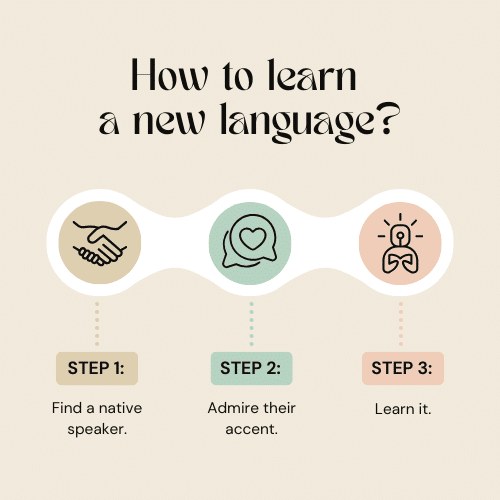Content development has a lot of moving parts. One of the big questions when crafting a content marketing strategy is, “How long should my content be?” You know, “What’s my word count?” And if you ask around in SEO circles, you’ll get about 100 different answers around short or long form content.
Why? Because the right answer is: it depends. On what? Your marketing strategies, your target audience, and your overall business goals.
Whether you’re pushing a product or service, the length of your content will impact your SEO and conversions. So yeah, content length matters… but it’s not as simple as “more words = more success.”
How Topic Matters: Not Everything Needs to Be Long
Size matters (you saw that one coming), but the topic is often the deciding factor. Some topics only need a quick explanation. Others, you could write a novel and still have more to say. Knowing the difference is key.
What topics need short form content?

Some topics are simple and don’t demand an in-depth explanation. For example, if you’re writing a post about “How to Reset Your Router“, you don’t need a 2,000-word epic. This is a simple topic—just give the step-by-step, tell them where the reset button is, and call it a day. 500-700 words, max. Anything more and your readers will tune out.
In this case, brevity is your friend because:
- Simplicity is key: People want answers fast. Most aren’t going to read your dissertation on router tech. The faster you help them solve their problem, the better.
- Clear CTAs: Whether you want them to reset that router or click “buy,” make it quick.
Another example could be a brief update on social media posts announcing a flash sale or event. Get in, get out.
What topics needs long form content?

On the flip side, some topics are complex and require long form content to provide value. Consider a topic like “The Complete Guide to Building a Content Marketing Strategy.”
You’re going to need room to breathe. This isn’t a quick how-to—this is deep-dive territory. Expect to hit 2,000-3,000 words, at least. Entire books have been written on the topic.
You’re guiding someone through:
- Define content marketing and its benefits.
- How to research and understand your potential customer.
- Discuss the different types of content (e.g., blogs, videos, social media posts).
- Walk through sales funnels, buyer journeys, and how content supports each stage of the purchase decision process.
This is the kind of high-quality content that makes people pay attention, bookmark your site, share it, and link back (which can boost your SEO). Basically, longer content positions you as an industry expert in complex topics.
So… how do you know when to go long or short?
When you understand your audience, you can develop buyer personas, and then use them to focus your content. During planning, ask yourself:
- Does this topic need detailed explanations, or is it simple and straightforward?
- Will this buyer persona need multiple steps or layers of information to act on this?
The answers to these two questions will help you align content length with complexity of topic.
If your topic is straightforward, keep it short. If it’s more complex, take the time to craft something that’ll give your audience everything they need.
Content Length and SEO: Does Size Matter?
Let’s cut to the chase: Yes, size matters for SEO. But hitting a word count alone isn’t going to make Google shower you with ****. What really matters is delivering high-quality content that hits the sweet spot of engagement and search intent.
Done right, longer pieces of original content can provide a more in-depth look into a topic, answer questions thoroughly, and provide value to your audience. When you create in-depth, valuable content that directly addresses the specific type of content your audience is searching for (e.g., guides, reviews, or tutorials), it’s more likely to meet their needs, improve SEO rankings, and increase engagement.
Longer articles, pages, and posts have several SEO advantages:
- Comprehensive Coverage: You’re answering a bunch of questions about your topic, product, or service in one go.
- Backlink Attraction: Industry experts and other sites are more likely to link to something meaty and valuable, which can enhance your existing content’s credibility.
- Better Engagement: People stick around longer (and maybe scroll a bit more), which helps your SEO. It also has higher chances of making a lasting impression and pushing them further down your sales funnels.
For SEO purposes, a good rule of thumb is around 1,500 words, but that’s not set in stone. The length of the buyer journey should also make a difference. Focus on value and then length.

Content Length and Conversions: What’s the Sweet Spot?
SEO focuses on getting people to your content. Conversions focus on getting them to do something once they’re there. Length plays a role here, too, depending where your audience is in the purchase decision process:
- Top of Funnel: In the awareness stage, short-form content, such as blog posts or quick social media posts, works well. People are just dipping their toes in. Social media platforms like Twitter or Instagram thrive on concise, punchy content that grabs attention.
- Middle of Funnel: At the consideration stage, your readers are actively researching solutions. Here’s where your 1,200-2,000 word guides and detailed blog posts come in handy. Take the time to show them why your product or service is what they need.
- Bottom of Funnel: When customers are at the decision stage, they’re ready to commit. Don’t make them work for it! For landing pages or specific product pages, calls to action (CTAs) should be clear, concise, and persuasive. Keep these pages focused—brevity with clarity is key to maximizing your conversion rate.
How do I adapt the length of my content by channel?
Are you a content creator developing a blog? Fine, go long. But when you’re posting on social media platforms, brevity is the name of the game. Don’t try to cram words into a Tweet or Instagram caption.
Longer content can be broken down into smaller chunks for social media posts. Use smaller, digestible pieces of content across platforms. It’ll keep things fresh and help pull your audience back to the full article.
For example, breaking your blog into bite-sized pieces allows you to repurpose it into different types of content for your content creation efforts. You could:
- Turn a blog post into a Twitter thread.
- Share key points as an Instagram carousel.
- Repurpose your content into a LinkedIn article.
These smaller pieces can act as teasers, drawing readers back to the longer form on your website, where you can guide them through the buyer journeys with strategically placed calls to action. Each platform has its quirks, but the idea is to create a consistent message while adjusting for length.
Conclusion: Size Matters, But Only When It Serves Your Strategy
At the end of the day, the ideal length of your content depends on what you’re trying to achieve. Whether it’s a blog post, landing page, or social media post, the goal is to create high-quality content that gives value to your audience.
Your content needs to align with where your audience is in the sales funnel, the type of content you’re creating, and the platform where you’re posting. Get that right, and you’ll see better SEO rankings, higher conversion rates, and more engaged readers.
And remember: sometimes, short and sweet is the best strategy. Other times? Give the people what they want—a deep dive into the good stuff.
